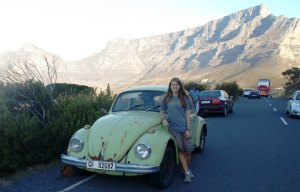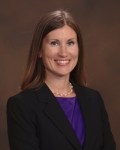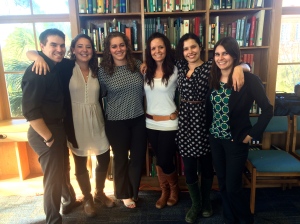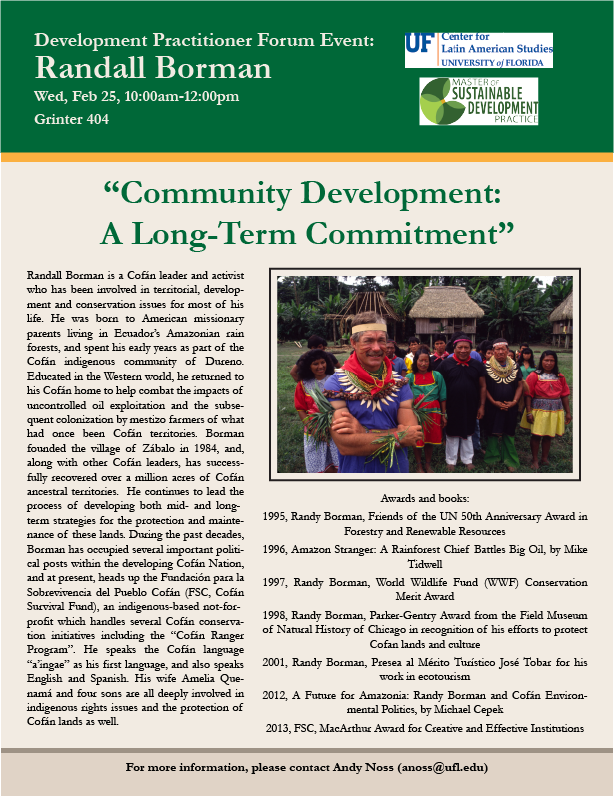Latest Event Updates
How It All Began: MDP students tell how they first became interested in international sustainable development
We asked our MDP students to tell their stories of how they first became interested in international sustainable development. As you will see each of their stories are incredible.
Amanda Brinton
I believe my interest in international development began from the adventurous tales I was told as a child of my father’s, grandparents’, and great-grandparents’ adventures in the Democratic Republic of Congo formally Zaire. My great-grandparents were some of the first missionaries that went to the DRC in 1916 and brought my six-month-old grandfather with them. Therefore, both my great-grandparents and grandparents spent the majority of their lives living there and my dad lived there until he was 14 when the country’s independence started and the country became more unstable, forcing my family back to the U.S.. As a child it seemed all very romantic, tales of meetings with chiefs and ant hills appearing overnight in your school house along with the occasional lion chase, as in the lion chasing my family.
However, at the time of hearing these stories I wasn’t comprehending the actual work that was taking place in community capacity building with the assistance of my family such as constructing schools and hospitals and helping build tribal relations among warring groups. I look back now and think “why didn’t I talk with by grandparents more about the actual work within development that they were doing.” It’s interesting now how this has worked due to my sister also now working in international development in Eastern Africa so it appears these tales really did influence our adult decisions of profession. It wasn’t until highschool that I began learning about the UN Environmental Program and started considering options in development with an environmental focus. Then during my first year of college in 2005, I learned about Ecotourism and that was it, I was sold. I knew for certain at that point moving forward that I wanted to work with communities in developing countries but focus on protecting the environment simultaneously. Though now my focus has shifted to solid waste management in developing countries specifically in Latin America and the Caribbean, I think a part of me still holds on to that sense of adventure and romance of the stories that will come to pass.
Rosanna Kingston
After working many years in projects that involved in-kind donations, I realized that I wanted to broaden my skills and work with projects that went beyond short term temporary fixes. I wanted to better understand and be able to contribute to projects that had more long term sustainable positive impact.
I especially wanted to work with mothers, children, and emerging young adults. I’d had some success with several projects I’d done, but I didn’t feel like they were making a lasting difference. I had been working up more lofty ideas for years, but they were beyond the scope of the organization I worked for. I wanted to be in a position where I could try to implement and organize strategies that would lead to a more lasting change.
I understood some issues quite well (especially those in my area), but I could see big holes in what I knew. I did some job interviews that made me also realize that I didn’t understand some of the language that others working in this field were using. There were skills like conducting focus groups or doing statistical studies that were completely beyond me.
I love this field and felt that if I pursue a graduate degree in sustainable development, it would increase my knowledge and enhance my career opportunities.
Pilar Morales Giner
I became generally interested in sustainability and the environment when I worked as an intern for the Nature Protection Service (SEPRONA) in Spain, where I learned about some neglected problems related with pollution in my home city and the public initiatives to combat environmental crimes. Additionally, I have always been motivated in learning more about human rights and social justice while completing my degrees. When I participated in exchange educational programs, I realized that communicating and cooperating with people from other cultures to achieve understanding was easier than I thought.
More specifically related to the topic of my field practicum, I first became interested in migration when I had the opportunity to attend meetings with immigrants in my hometown (coordinated by a local NGO). These meetings were something of a shock to me, as they marked the first time that I was made aware of both the opportunities and the struggles that immigrant communities in Europe go through.
Tania Bautista
I became interested in Sustainable Development when I started to pursue new ways to benefit local communities and the rainforest in Peru. My experience with conservation started since I was in the university studying my undergraduate degree in ecotourism. I did a lot of volunteerism with local environmental education organizations and conservation organizations. Despite the great contributions these organizations made to conserve the rainforest, I started to experience the conflict between local communities, development, and conservation.
My desire to understand and support initiatives that can help to reconcile these conflicts was my main motivation to start working on projects with Sustainable Development components. I had the opportunity to participate in community conservation projects and REDD+ initiatives with recognized conservation organizations like World Wildlife Fund (WWF) and local organizations like the regional government in my region. I also worked on projects focusing on the effects of climate change on farmers, deforestation, and labor dynamics of gold mining and ecotourism. Nonetheless, I learned from these experiences that the definition and applicability of sustainable development is in constant improvement based on evidence in the field and practice and this is why I decided to start a Master of Sustainable Development Practice (MDP).
I expect that through grad school and my own experience applying a sustainable approach to conservation initiatives with local communities will give me more clarity regarding the potential uses and benefits of Sustainable Development as a conceptual framework.
Iliana Jaimes
Since I was in high school I have been interested in environmental problems, which were becoming more and more recognized and mentioned in my school or in the news. I was very moved by the fact that man as a specie was destroying the natural world where he lives, and on which he depends.
Therefore, I chose to enroll in Environmental Engineering for my undergraduate studies, since it is a profession that seeks the protection of the environment and human health through the application of scientific and engineering principles.
During several years of practicing this profession, I had the opportunity to work in different companies and in different fields; Environmental engineering (analysis of contaminants in water, soil and air), environmental consulting company (elaboration of monitoring, environmental impact studies and environmental management plans), engineering companies (planning and construction of engineering projects), Oil companies (Environmental audit of wells) and civil construction companies (interventory in the construction of water treatment plants).
Throughout this work experience, I realized that environmental protection not only depends on existing technologies for this purpose, but it is also influenced by other aspects. Mainly the economic factor since conserving or recovering the environment is usually costly and unproductive. On the other hand, society also influences, since certain customs inherent in our cultures and the lack of environmental education, makes people unaware of existing and future environmental problems, neither know which tools to use day to day to contribute to the change needed in this respect.
Since I was in college, the Sustainable Development concept was mentioned several times in some of the classes, but it was more with the work experience that I realized the importance of being able to achieve an appropriate balance between economic growth, social welfare, and environmental protection.
This Master’s of Sustainable Development Practice program at UF has given me a much broader vision than I had about sustainable development, and I hope to continue learning about it, but always focusing on working on green projects; those which generate an additional economic value, well-being in the community, and, above all, that protect and improve the environment quality.
Thanks to the agreement between UF-MDP and COLFUTURO, I had the opportunity to come and learn about this exciting and interesting area of study with a wide perspective of the world…
Grace Palacios
When I decided to do my undergrad in Sustainable Tourism, it was because I truly thought It was an amazing proposal to develop tourism in rural areas in order to generate sustainable development and enhance livelihood opportunities through tourism. Once on the road, I realized that many locations in my country had a myriad of complicated and deep-rooted problems that needed to be considered and addressed before implementing any kind of tourism proposal. A tourism proposal was basically “the cherry on the top” after extensive work concerning the core development focus (water and sanitation, infrastructure, markets, government and policy, ecosystem conservation, local products, social well-being, cultural identity women empowerment, education, stakeholder transparency and capacity building, among others). A tourism proposal couldn’t address all of these, it was urgent to have previous projects to enhance the situation in these locations. Thus, I decided to earn a master degree in Sustainable Development.
Through my working experience in Peru, I’ve had the opportunity to participate in different development projects in rural areas. I’ve been involved in solid waste management assessments, regional conservation area creation, reforestation programs, strengthening cultural identities and sustainable tourism assessments. These experiences have consistently confirmed the immediate need I have to be specialized and trained in sustainable development. Also, through these jobs I mentioned, I noticed how it was harder for me to access the position without a development specialization.
Derek Sindler
It all started in 8th grade. History class. The teacher, Mrs. Townsend, showed a video of wasting children to show us what extreme poverty looks like, and that it exists in the world today. I was shocked. Appalled. Confused. The shock and appall eventually subsided, but the confusion stuck. It was confusing that the greatest challenge in my life at the time was convincing my parents to buy me certain brands of sneakers; while there were people elsewhere that were literally starving. Even the poorer classmates of mine, who were in families that lived paycheck-to-paycheck in subsidized housing, weren’t starving. It was like a crooked painting on the wall- something is just not right with this picture.
From that seed of realization of injustice has grown an MDP inscription. Along the way, there have been different stages of growth. From my initial urges to round up charity and send it overseas, I changed to thinking that people should be able to support themselves by themselves. I went to a mock U.N. conference in between my junior and senior years of high school. Economic development began to be my mantra. Life got in the way though, and I didn’t satisfy the itch to launch a career in international economic development. Instead, I stumbled into the moment where I was looking at the UF Graduate Catalogue for programs and I found MDP. Vwallah. Now, I have come to realize the beautiful side of the s-word (sustainability), in that balance and a holistic mindset are the keys to unlock justice.
With my concentration of sustainable food systems, I hope that my budding development career will someday bear fruit that feeds some people.
Maria Fontecha
When I was studying journalism in Colombia, I wanted to be like Superman… a reporter that saves the world and helps the people. I wanted to cover conflict and write stories from foreign countries like Ryszard Kapuściński or Orianna Fallaci. However, life had something different for me. I was 22 when Semana, the most prestigious magazine in Colombia, hired me to collaborate in the creation of the first sustainable news platform. At the beginning, it was just a job for me, and I wanted to be part of the magazine and have some experience. I helped to cover some environmental reports and write about poverty and gender. I must confess that I was never interested in that in a while I studied in the university. Nonetheless, I had the privilege to interview and meet different people that dreamed of a better world. They had diverse backgrounds and ideas, yet they shared the “saving the world” idea. I was inspired and recalled my motivation for studying journalism: helping people.
Being part of the team that created this platform changed my life. It showed me that giving the voice to the people and publish reliable, human information can make a difference. However, I realized that I didn’t know anything about sustainability; I took some courses and read books about it, but I was never fully satisfied. After Semana Sostenible I had the opportunity to work in the Congress of Colombia as an advisor for a congresswoman in environmental and social issues. I wrote the law that makes mandatory that companies and public building have appropriated lactation rooms. It is a small action to help worker mothers to feed their babies, but it has helped thousands of women in the country to make maternity less discriminatory. Nevertheless, the best was yet to come.
I worked as communication coordinator in Fondo Acción and I had the opportunity to work with a fantastic team and some indigenous and Afro-Colombian communities. Traveling outside urban areas in Colombia showed me how much my country needs equity and peace. It has the most beautiful forests, beaches, and ecosystems in the world. Also, it has cultural diversity in every corner of the territory. However, civil war and corruption have increased the poverty of the most vulnerable people in the las 50 years. Even though inspiration and hope came from the people. Communities taught me that a better future was possible and they believe better times will come with the peace negotiation. They have the solutions to local issues, just need somebody that works with them as partners. I want to be part of the first peace generation, I want to be prepare and help them. That’s the reason behind my travel to the United States.
Rebecca Starkman
My interest in sustainable development grew from my joy of traveling and my upbringing. I lived part of my life in Central and South America before moving to the U.S. and I was fortunate to experience both cultures and worlds growing up with Honduran and American parents. In later years as I traveled a little more, I became more interested in pursuing international development work. After spending some time working in finance, I began thinking more seriously about what kind of career I wanted and what I really wanted to do. During this search, I came across different development jobs related to environment, economics, etc. but I didn’t see connections between the different fields of work. That is what moved me towards sustainable development. I saw it as a combined field of study and opportunity to learn about development from more than one perspective. I also saw it as an opportunity to work with like-minded people, possibly from different backgrounds, who had similar interests in development.
Rachel Velez
My interest in international sustainable development evolved from my participation in my high school’s Center for International Studies (CIS) magnet program. It was here that I first immersed myself into East African studies, where we were introduced to a number of guest speakers from countries such as Uganda, Kenya, and (former) Sudan. I fell in love with the continent, specifically the culture of the Swahili Coast, and knew I would dedicate the rest of my academic career to African Studies. Luckily enough, not two hours north of my home in Orlando was the University of Florida’s Center for African Studies – one of the top-rated programs of its kind in the nation. Upon admission into college, I was fortunate enough to participate in a health intervention in Guatemala, where I finally understood what it meant to be a global citizen. Although I had visited many countries during my time in the CIS program, I never really understood what it meant to connect with a different culture – to work with them, live with them, cry with them, laugh with them. I would honestly have to say that trip solidified my desire to work in the development sector, and through the MDP program, I have been lucky enough to intersect my love of East Africa and international community-based development.
Sarah Ward
I first became interested in sustainable development when studying abroad and doing GIS work for a development organization in Ghana. I knew what concepts and subjects of expertise I was interested in but hadn’t yet been introduced to organizations that were effectively working on these issues until that time. I was most struck by the young children I always saw selling things in the streets early in the mornings and was always curious to know their stories. What were they interested in? What was their potential? I thought deeply on this daily and wondered if with more opportunity, one of those kids would be able to develop and share a solution to one of the world’s greatest issues. I began to exceedingly be interested in development projects and programs that would help children like those on the streets realize their human potential. Thus I have always been motivated by a Stephen Jay Gould quote, saying: “I am, somehow, less interested in the weight and convolutions of Einstein’s brain than in the near certainty that people of equal talent have lived and died in cotton fields and sweatshops.” This motivation is what then took me to Kibera, where I had the opportunity to work with some of the brightest young minds in Kenya and work with program officers who were working to give the youth of Kibera opportunities to help them further their reach in the world.
MDP Poster Session 2017
At this year’s annual Latin American Studies Field Research Clinic, our MDP cohort 6 students presented their research practicum posters alongside other master’s students from Latin American Studies and doctoral studies from a variety of other programs. From the MDP category Lacey Harris-Coble won first place, Pilar Morales Giner won second place, and Amanda Brinton won Grand Prize winner of all the categories.
Check out the poster session video on the MDP page at https://www.facebook.com/MDP.Program/
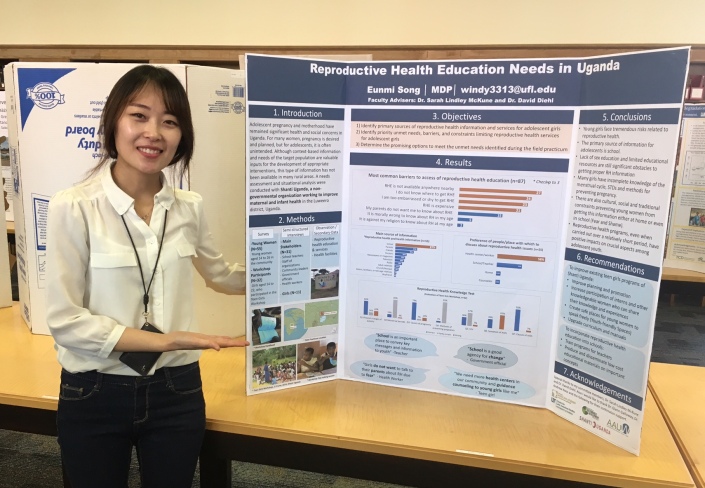
Eunmi Song
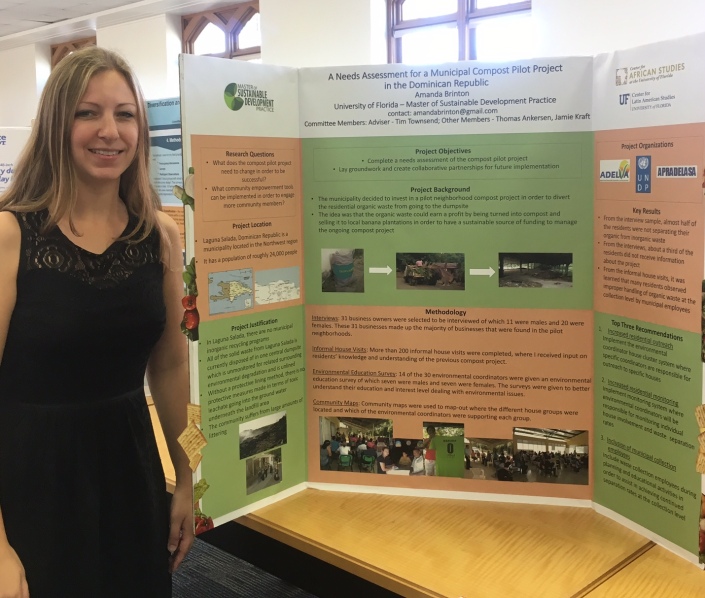
Amanda Brinton
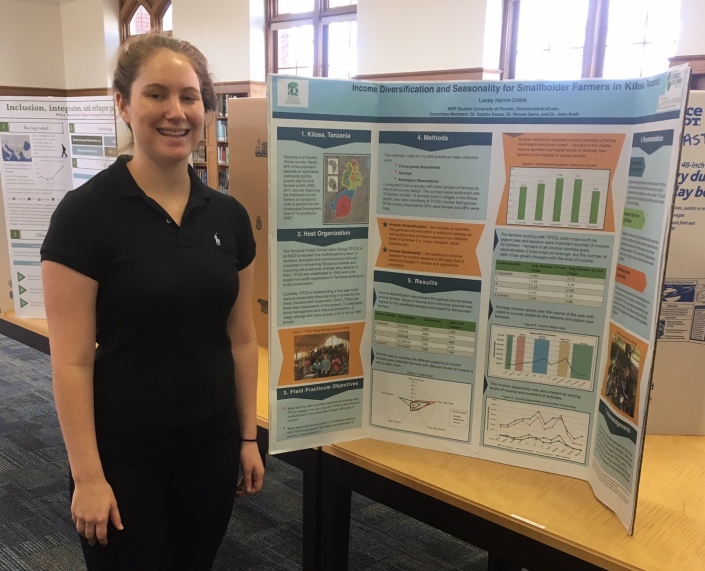
Lacey Harris-Coble
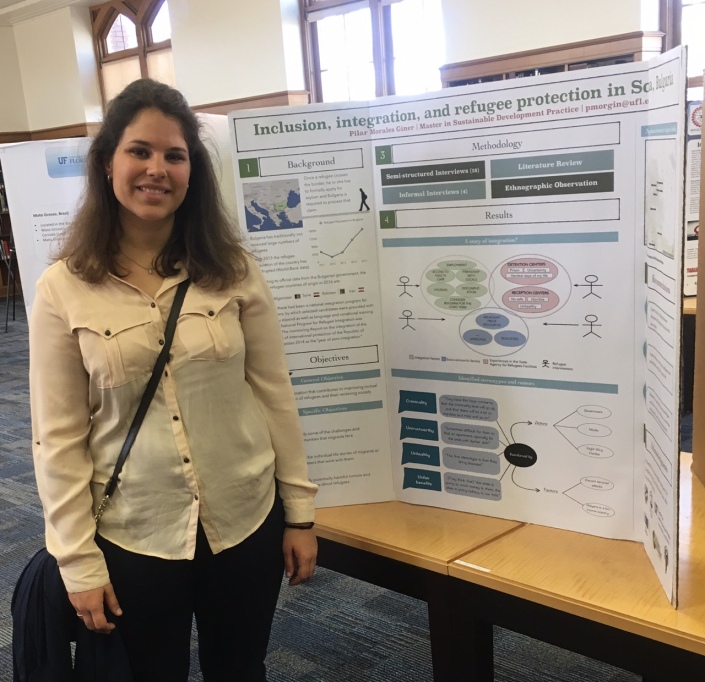
Pilar Morales Giner
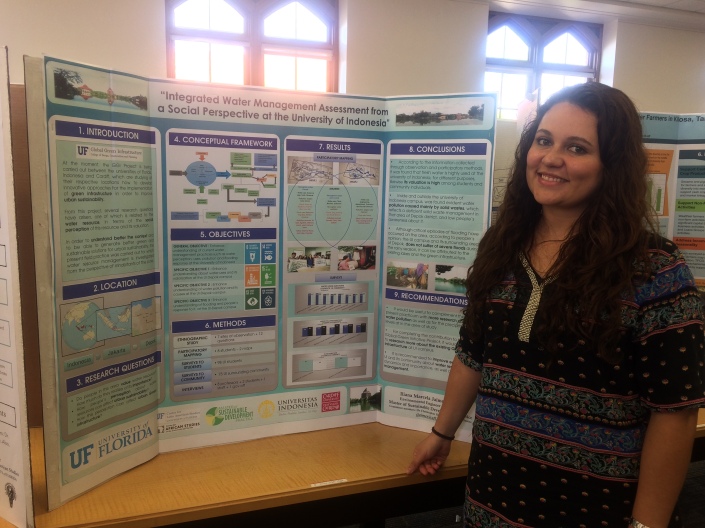
Iliana Jaimes
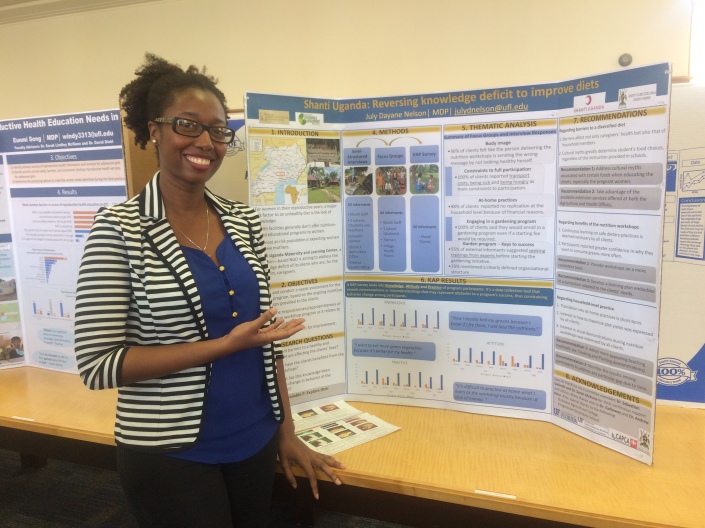
July Nelson
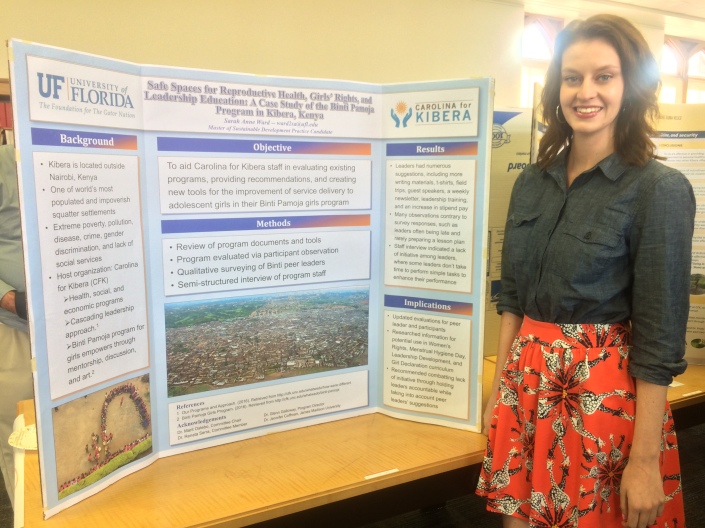
Sarah Ward
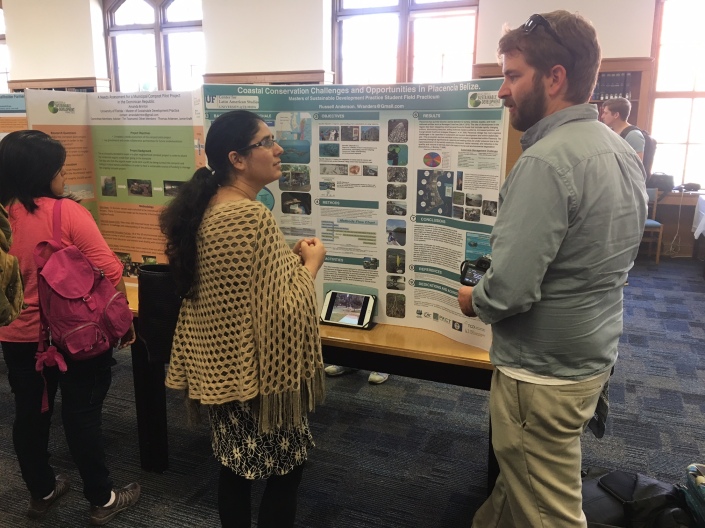
Russell Anderson
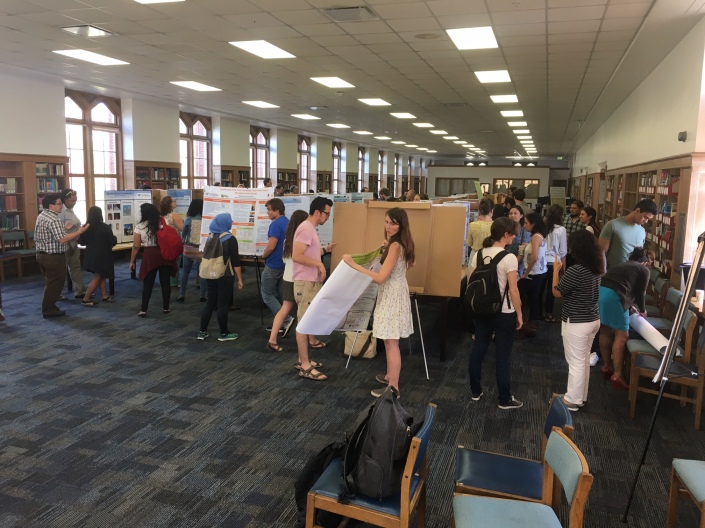
Rachel Velez
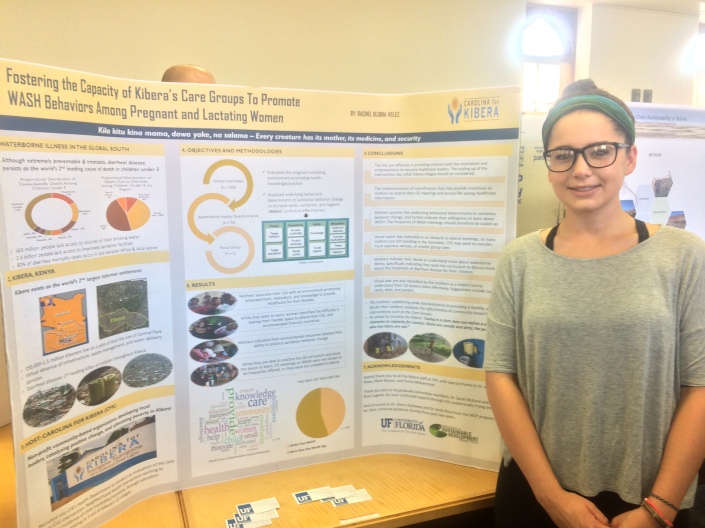
Practicum Presentations 2016
On February 26th our cohort 5 students presented their practicum posters at the 14th annual Center for Latin American Studies’ Field Research Clinic, presenting with other graduate students from Latin American Studies.
In the following weeks our students also presented their summer practicum research presentations.
You can find their first hand accounts of their summer practicums in the previous blog “Stories of Summer”.
Check out some of the poster session talks on our Facebook page
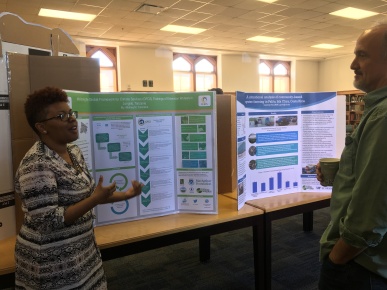
Whitney Turientine, Tanzania
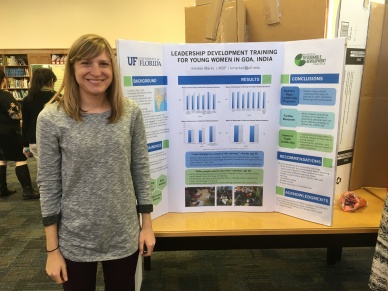
Kristen Marks, India
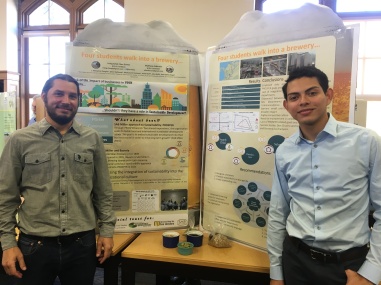
Matt Anderson and Irving Chan, Colombia
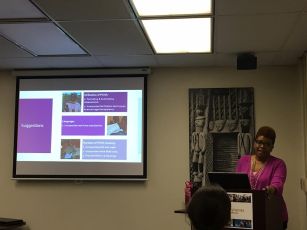
Whitney Turientine, Tanzania
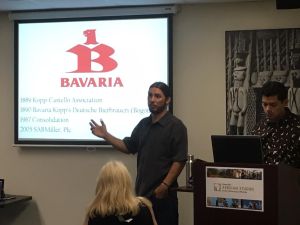
Matt Anderson, Colombia
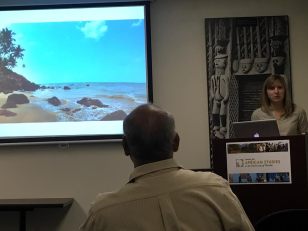
Kristen Marks, India
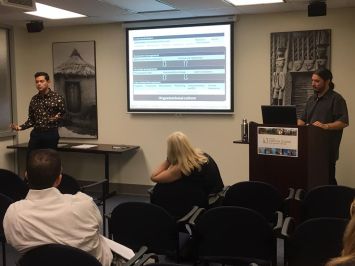
Irving Chan, Colombia
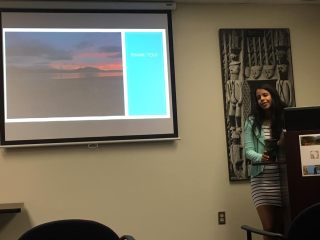
Gabriela Polo, Costa Rica
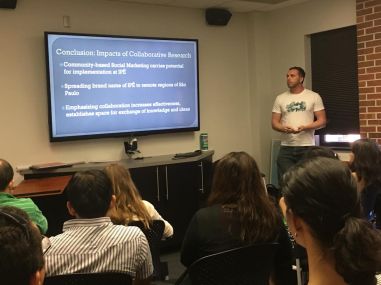
Ben Christ, Brazil, presenting his summer practicum research at the TCD Tropilunch
Stories of Summer: MDP students’s 2015 summer practicum interviews
During the summer between the first and second year of the MDP program, students complete a 10-12 week practicum. The field practicum is the formative development practice experience for MDP students. It provides students with the opportunity to apply inter-disciplinary and cross-cultural problem solving skills outside the classroom in international contexts with local communities, experienced practitioners and teams, representing diverse organizations and institutions, to address important development challenges.
Whitney Turientine; climate change mitigation outreach; Senegal, Tanzania
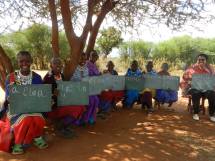
Whitney Turientine completed her summer practicum over a 12-week period in both Senegal and Tanzania in 2015. During her first two weeks in Senegal, Whitney spent time learning how the Senegalese Meteorological Agency (ANACIM) and the Research Program on Climate Change, Agriculture, and Food Security (CCAFS) in Senegal were integrating indigenous climate knowledge and scientific climate information together to aid smallholder farmers to adapt to rapidly changing climatic conditions in the country.
Following the two weeks in Senegal, Whitney then spent 10 weeks in the Arusha province of Tanzania. There she worked as a research associate with CCAFS interviewing agriculture and livestock extension workers who were trained on the Participatory Integrated Climate Services for Agriculture (PICSA) approach earlier that year. The PICSA approach is a method that trains extension workers to assist farmers and livestock holders in developing livelihood diversification strategies based on: their own knowledge of their household resources, local weather patterns, participatory budget planning, and climate information services.
From the interviews with local extension workers in the country, Whitney learned many valuable insights on how to improve the coming extension trainings this upcoming year. After her practicum was complete, Whitney was able to draft a detailed report for CCAFS on ways to improve extension worker trainings in the country. Through the practicum experience in both countries, Whitney gained a greater interest in designing and implementing trainings for development professionals.
Q: What was the most challenging part?
A: One of the most challenging parts was filtering out the information I was gathering during my interviews. It was hard trying to adjust my questions and figure out what people were actually saying. Though at times I felt impatient to simply write down the interview responses, it was much more valuable to observe and understand the reality of what people were telling me in the interviews.
Q: What was the most powerful moment?
A: For me, there were many moments throughout the practicum that were powerful. One in particular was when people in the community I worked in began to see the value of my work and when I began to receive positive feedback from them. It felt good to hear their feedback on ways to improve the trainings that were conducted prior to my arrival. Another powerful experience for me was making friendships with people in my surrounding community. These friendships were extremely important for me because, at times, I felt like a lone ranger because I didn’t have a direct office or co-workers to collaborate with on a daily basis.
Q: How will you apply this experience to your future career?
A: I’m hoping to show through this experience that I can work in an organization with multiple stakeholders. My program was funded through many different organizations and it made me realize the importance of being able to work effectively with each stakeholder to understand and manage their expectations. I’ve also learned that although working as a consultant has its perks, I am more interested in working as a development professional with a singular organization full-time. My interests in gender and development, food security, and Sub-Saharan Africa remain the same.
Q: How was your overall living experience?
A: My overall living experience was great! It’s important to know that this wasn’t my first time living in the country. During my practicum, I lived with a woman named Lilian who is really close friends to a lady in Arusha that I consider to be like an Aunt. I lived in a typical, Tanzanian family compound and had my own room. I felt very safe and that people were looking out for me all the time. The water supply was intermittent towards the final weeks of my stay. My hostmom and I both were beyond fed up after seven days of no running water in the house! We later found out that the nearby road construction had impacted the water supply. Other than that, my stay with my host can be characterized in two words: just fine. Plus, I got to brush up on my Swahili!
Gabriela Polo; analysis of legal framework and extension with oyster farmer group; Costa Rica
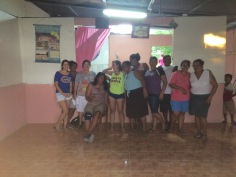
Gabriela Polo completed her 9 week practicum in both San Jose and Isla Chira, Costa Rica. Gabriela was part of a joint program with the law school at UF that lasted a month. The program focused on the analysis of the legal and regulatory framework for aquaculture and specifically oyster farming in Costa Rica. Then after the four week course, Gabriela went and completed her practicum for another five weeks with a group of primarily women oyster farmers. Her site was Isla Chira, an island located on one of Costa Rica’s largest gulfs, Icoya. Once Gabriela arrived on site, she completed participant observation and interviews and found out about some of the specific challenges the community was facing. Gabriela used all the information she gathered and created a situational analysis and put together recommendations to give to the oyster farmers and some organizations that were collaborating with them.
Q: What was the most challenging part?
A: I had no idea what I was getting into. I grew up in big cities and it was challenging living in a rural setting. It was very hot, rural, low income, and therefore not a lot of infrastructure. It was also the most rewarding because the community and the people who lived there were amazing. I built some great relationships with the people who were there. Nine of the 12 oyster farmers were women and I think it really helped that I could speak Spanish because I am Ecuadorian but I was also foreign so we could bond over similarities and differences. Time constraints were also challenging because I felt like I couldn’t give them my all due to the limited time.
Q: What was the most powerful moment?
A: It was a hot day and I had just finished helping the group of oyster farmers clean their catch. We were sitting under the mango trees cooling off and a monkey came onto the tree and started picking off the mangos and I had a moment of shock and beauty of the whole situation. That is when it hit me of what a beautiful place it was despite the heat and harder living conditions. It was a truly valuable moment for me of when I was able to reflect on what an amazing experience I was having. This moment changed my perspective on my experience.
Another moment that made me quickly appreciate the people around me is when I was stung by a scorpion. When I was stung, the entire community wanted to know that I was ok and that made me feel part of the community. The community during my practicum was amazing and made the experience.
Q: How will you apply this experience to your future career?
A: Having this on-the-ground experience of living with a community and being able to apply the field skills I learned such as participant observations and interviews I think will be very useful for a career. A dream job of mine would be to work at an organization similar to the World Resource Institute focused in urban areas. I’m very open though, for example, my field practicum was supposed to be a very different topic but I’m so happy it turned out the way it did. I’ve learned that flexibility is very valuable and this program and my practicum have showed me that.
Q: How was your overall living experience?
A: The first four weeks we were In San Jose in a large house that was designed for students. Then after that on Isla Chira, I was with a host family with two parents and four children. They gave me a room in the house which was half cement and half wood. Transportation to the island was also very challenging. From the closest city it was an hour and a half bus ride, followed by a long walk down to the boating outpost, then I had to take a boat for another hour and a half, and last take a bus for another 45 minutes. For water resources there was a rainwater catchment tank and there was a small tube for running water for a shower. I had very little internet and unfortunately I was sick a lot from allergy issues.
Jessica Horwood; small business capacity building; South Africa

Jessica Horwood’s practicum was a total of 10 weeks based in Cape Town, South Africa and was part of a study abroad program from UF which is run out of the Warrington Business School called Entrepreneurship and Empowerment in South Africa (EESA). In the program Jessica was trained to be a consultant and then completed consultation work with small business owners using a mix of theory and practice which took place over the first six weeks. The first week before the program began, Jessica was able to select the clients that would be consulted and identified the stakeholders. In the last three weeks, Jessica worked on implementing a tracking system so that when the consulting work was done with the clients, Jessica and her coworkers could see if the clients were progressing and see any challenges the clients wanted to voice. The tracking system was intended mainly for use by EESA which wanted to know if their services were useful or impactful.
Q: What was the most challenging part?
A: The most challenging aspect for me was that I was working in a field that I knew very little about. I had never taken a business course and all of sudden I was a business consultant, so ethically I felt a bit strange working with real business owners. It was hard because business wasn’t a passion of mine so I felt a little resistant about getting my head around it. Each group of consultants had 2 clients each. My team had a woman who started an Ecucare center which is a daycare and preschool combined. Three male clients were graphic designers who designed clothing locally and did a lot of branding for corporate identities. I think the reason I chose to focus on entrepreneurship is that I I’m passionate about economic empowerment. I like the idea of building people up locally so that they can support themselves and not being dependent on foreign projects or foreign aid. The technical part of it is hard for me due to my lack of background.
Q: What was the most powerful moment?
A: I think I enjoyed the final three weeks after the program ended when everyone else went home and I was just left there on my own to follow up with clients that we had been working with. I felt I was connecting with clients on a different level. Less of a consultant or professional and more as a human being interested in how they are doing. The things that came out of the interviews I had with the clients were kind of remarkable and spoke to how they are as entrepreneurs and inspiring individuals. Many of them came out of poverty and did something remarkable with their lives. I was really inspired by it and I was encouraged by their receptiveness of the EESA program. I think when you are participating in the program you don’t really take a step back and reflect on the impact that you are making and to have the opportunity to ask them about their experiences with EESA was very encouraging and beneficial for them.
Q: How do you see yourself applying this to your future career?
A: I would ideally work for an organization that focuses on empowering people to solve their own problems locally. There are a lot of organizations that deal with leadership development competency building that I would be interested in working for. I don’t know if I coud be a busniess consultant but I know I’m still inspired by that field of capacity building and leadership development.
Q: How was your overall living experience and the relationships you made?
A: It was good, I had a cushy deal. I was in Cape town which was a lovely city. There are mountains and beaches. I didn’t feel like I had a hardship. I hadto keep reminding myself I was in Africa. I was living at the university for the first seven weeks with a typical dorm. The final three weeks I was living at a shelter for abused women and children. There was a separate apartment connected to the shelter. It had nothing to do with the practicum it was just a place for me to stay. but I loved it. It added another component because I would eat with these victimized women every night and hear crazy stories for example how they had been trafficked to Cape Town from Botswana.
The first seven weeks were difficult because I was working with other consultants who were American undergraduates. I built some good relations with them but I wasn’t really interested in making close friendships with other Americans. I was working out of an entrepreneurship hub where entrepreneurs could come in and get free desk space. and so I got to work out of that office during the final three weeks which was fun. I never felt lonely. Even culturally it was a very familiar culture to me due to growing up in parts of Africa.
Benjamin Christ; community-based social marketing promoting forest conservation; Brazil
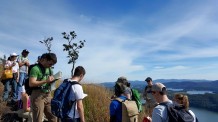
Benjamin Christ completed an extended field practicum in Nazaré Paulista, a rural community near São Paulo, Brazil. Throughout his seven-month stay, he collaborated with colleagues from IPÊ—Instituto de Pesquisas Ecológicas to apply aspects of Community-based Social Marketing, leading to a better understanding of rural producers’ participation in Atlantic Forest restoration programs around the Cantareira Reservoir System. Ben utilized surveys and focus groups to identify barriers and benefits to such participation, and worked with IPÊ’s environmental educators and extensionists to adapt an existing program to rural producers’ needs. His collaboration with IPÊ also involved providing translation of materials for publication, assisting with the implementation of various projects, and serving as a Teaching Assistant for Columbia University’s Summer Ecosystem Experiences for Undergraduates course. Ben’s practicum was partially funded through UF’s Tropical Conservation and Development Practitioner Grant program.
Q: What was the most challenging part?
A: The most challenging part of my field practicum was staying focused when surrounded by so many exciting opportunities to participate in IPÊ’s projects. However, I eventually realized that participating in related activities only enhanced my core practicum experience, and managed to strike a balance that made my stay at IPÊ truly unforgettable.
Q: What was the most powerful moment?
A: One of the best moments during my field practicum was when I was able to apply skills that I learned throughout the implementation of my survey to assist with the creation of a new initiative at IPÊ aiming to improve economic opportunities for women in the Nazaré Paulista community. It was the moment that I truly felt like part of the IPÊ team.
Q: How do you see yourself applying this to your future career?
A: My work with IPÊ and the rural producers of Nazaré Paulista only reinforced my desire to work within the “sweet spot” linking society to the environment. I came to understand the importance of empathy when working with potential participants of restoration programs, for example, and that taking the time to listen to their needs and concerns can positively influence their desire to make necessary changes on their lands.
Q: How was your overall living experience and the relationships you made?
A: Living on the IPÊ campus fell somewhere in the happy medium between staying at an all-inclusive rainforest resort and camping in the middle of nowhere. The organization’s kitchen staff kept all of us well fed, and my evenings often consisted of socializing with the students of IPÊ’s Masters and MBA programs. The recently constructed dormitories were very comfortable, but I soon learned to never open my room’s door with the lights on at night, or every insect of the Atlantic Forest would invade my living space. The long and winding dirt road that led to IPÊ’s main gates always reminded me of how separated I was from urban living, despite being a mere hour from the booming capital of São Paulo. Of course there were minor inconveniences, such as a rampant stomach virus and a horrific thunderstorm that shut down IPÊ for three days. However, I really cannot complain…living and working at IPÊ was an incredible experience.
Matt Anderson and Irving Chan; assessment of sustainability in company culture; Colombia
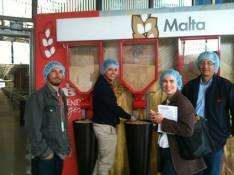
Matt Anderson and Irving Chan completed their summer practicum over 11 weeks in Bogotá, Colombia. The practicum was based working with the international SABMiller Brewing Company. The two worked with the company’s Colombian brewery called Bavaria. For the practicum, Matt and Irving worked on improving the company’s sustainability program that was a few years old and assessed how well it had been integrated into the company’s culture. A target goal was to look at middle management and general employees and see if sustainability and its importance was being perceived by company personnel.
Q: What was the most challenging part of the practicum?
A: The most challenging part was group dynamics because we were working in a group of four people from other universities. It was very challenging coordinating before the practicum. There was some communication but not a lot. The most difficult part was dealing with people’s personalities and characteristics along with different ideas and different levels of commitment. It was hard to manage team dynamics especially when we didn’t know our teammates and had never met them before. We had a good relationship with project counterparts though and the many stakeholders.
Q: What was the most powerful moment?
A: Irving: We were working with middle management, general employees, and directors of the plants; however, the majority of our time was spent at the headquarters office. We had the opportunity to visit five plant operations including three breweries, one labeling branch, and headquarters. We interviewed a plant manager who explained how the real resistance of sustainability is in middle management not with employees. He explained how the incorporation of sustainability needs to be focused at the management level in order to reach the employees which was very eye-opening.
Another moment was when a director was honest about middle managers. Most middle managers would say the company cares and we care, but this director had the backbone to say “As of now we are not at the level the media wants us to be at. We just do this because we have to.” For me it was a lot of reality checks. What gave me hope was that they knew the realities and it was a matter of addressing the problem.
Matt: Going to the Barranquilla plant after we had been at the main plant in Bogotá was powerful for me. Everyone said that it would be totally different and interesting to see the difference in culture and the plant highlighted the understanding of what people perceived as as important. Even though different people had warned us that it was in a poorer area and perhaps less high standards at the plant, it had a better understanding of sustainability.
Irving: As Matt was saying, of the 10 different breweries in the country, Barranquilla was the lowest performer. When talking to manager before we left, he said it’s going to be hard and tough at this plant. Yes we could see absolute differences such as it was in the center of a slum with 20-30 foot stone walls surrounding the entire operation. It was shocking that the employees understood social and environmental responsibility better than the best plants.
Q: How do you see this applying to future careers?
A: Matt: It made me very interested to work in the Corporate Social Responsibility realm. It made me more aware and less judgmental of corporations. Not that I think that corporations are perfect but I think as far as sustainability, there is room to improve their operations and our benefitting from it.
Irving: I also want to get into Corporate Social Responsibility (CSR). SABMiller is the largest brewing operation in the world and when you look at the company’s sustainability report, you will have that insider’s perspective. There are hundreds of pages of CSR reports and it turns out really only two people are working on CSR at the entire company. Then you realize the work is being done but the way it is being done is hard because there is not enough communication. Having that insider perspective made me aware there is a whole lot to do to improve CSR.
Q: How was your overall living experience?
A: The hardest part was living with our group in our apartment. We had a three bedroom apartment and we intended to rotate through the bedrooms so everyone had a chance for a time to have their own room, however, that did not work out as planned. Bogotá was huge and we enjoyed the aspects that the city had to offer. Otherwise we luckily did not suffer from illness or injury.
Kristen Marks; leadership development training for at-risk young women; India
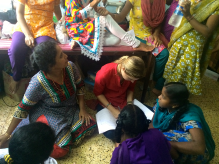
Kristen Marks completed her summer practicum in Goa, India, where she did leadership development training with young women between the ages of 15-26 who were at risk of sex trafficking. Kristen partnered with an anti-trafficking organization, Rahab’s Rope, and worked at their stitching center, a place where young women could go to learn viable life options outside of the sex trade. Kristen’s main responsibilities included creating curriculum, leading weekly workshops, and evaluating the leadership training. The workshops included topics of leadership skills, working with others, having goals, healthy body image, and self-esteem.
Q: What was the most challenging part about the practicum?
A: I loved it, but it was incredibly challenging. Many of the girls are not very receptive of outsiders, and it took roughly five weeks to establish trust and form relationships before I worked with the girls in the training sessions.
Q: What was the most powerful moment during your practicum?
A: The most powerful moment for me happened during the last training session with the girls when we talked about their goals and dreams for the future. Hearing every girl’s dream was so inspirational. One girl wanted to be a teacher while another wanted to save up enough money to fly on a plane. Hearing these dreams and being able to internalize them brought tears to my eyes. I desperately want them to reach their goals. They are all so wonderful, smart and beautiful. Throughout the practicum, the girls called me “poggle” which means “crazy” in Hindi. It meant the world for them to accept this “poggle” American, and I’m incredibly thankful for the relationships that were built with the girls.
Q: How will you apply this experience to your future career?
A: I believe that lasting change in a country occurs through reaching its young people. Youth leadership development is where my heart is and what I want to continue to work in. People always says that the youth are the future leaders, but you can’t tell the youth they are significant without giving them the chance to be significant.
Q: How was your overall living experience:
A: For 11 weeks I lived in Goa, a major tourist destination in India full of beautiful beaches. The first half of the summer, it was ridiculously hot. By the end of the summer, I was sleeping with three fans constantly blowing on me and I was still sweating! The second half of the summer was monsoon season so it rained constantly and nothing really ever dried. My passport even molded! Though the culture shock was not a big deal for me, there are aspects of India that puzzle me, and I still have a hard time grasping some social concepts like the caste system.
The Dirt: the good, the dramatic, and the hilarious tales from our trails
This segment is written to bring to life a few of the MDP students’ thousands of stories they all have to tell from their work, travels, and life experiences. Enjoy!
Jessica Horwood: From her summer practicum
Before I left for my field practicum, my committee chair mentioned that I may need to rent a vehicle while in Cape Town, South Africa since it’s hard to get around without one and the public transport is very dangerous. I didn’t think much of this because public transport does not scare me and is usually a good way to get acquainted with the locals and learn customs and culture. I didn’t even include a rental car in my Practicum budget.
Before I arrived in South Africa, I stopped off in Brussels to visit my best friend who used to live Cape Town. She jokingly mentioned that I should rent a VW Beetle from Best Beetle, a rental car company that rented out really cheap old disheveled Beetles to tourists and exchange students. Again I brushed it aside, again, pretty certain that public transport would be just fine, thank you.
Week two of my practicum I realized that public transport was really not an option. Cape Town is like Los Angeles; spread out without a very functional public transport system. The more my practicum came together, the more I realized that I would absolutely need a car unless I was willing to stay put or spend half my day attempting to navigate the ‘taxis-buses.’ Besides that I was not living anywhere near where I was working, so there was really no hope of easily accessing the clients I needed to meet with… without a car.
Without any research, I rented a 1974 VW Beetle from Best Beetle, as jokingly suggested by my friend. The people at the rental store sat me through a 45 minute contract signing meeting where they waved any liability, made me pay upfront in cash, gave me a brief, rather uninformative ‘How to work one of these machines’ trainings and handed over the keys, wishing me luck. The drive home was a disaster. Not only was I driving on the left side of the road for the first time, where I kept turning into oncoming traffic; it was also cold, rainy, and dark. The car’s body was rusted and leaky with wind coming in from every orifice (let me remind you that it was winter in Cape Town). Shifting was no fun (especially with my left hand), no one thought to tell me how to reverse, which was not common sense in these cars. The engine was so loud that it crowded out any hope of a conversation (if I ever managed to get a passenger to ride with me; a rare occurrence I must say) and I couldn’t reach the pedals because the seats were not adjustable.
I didn’t touch the car the first week I had it. I would sometimes look at it, took a couple of pictures, and talked about it some. It was like we were interested in each other but knew that we had a rough relationship ahead so were hesitant to dive into any sort of partnership before we had to. Soon enough, I was on my own. All my classmates and colleagues left, and it was just the Beetle and me. The first time I drove it after that first night, I didn’t realize that you can’t just turn it on and go. There is love and patience required. I had to switch the car on and manually rev the engine for at least 10 minutes (injecting fuel into the engine) before I could get it to wake up and get moving; very obnoxious to any neighbors that happen to be around. The oil needed to be checked daily, and filled up about three times a week; I never figured out why. I was only allowed to put about $10 of gas into the car at a time because the tank was in the front and the fumes would blow into my face as I drove (this was written in that contract I signed at the beginning).
Slowly, perhaps because I was dependent on it, it grew on me. I got a pillow to push me forward so that I could reach the pedals and a little charm to hang from the rear view mirror. People on the roads loved it. Everyone would honk and wink and let me into their lane, and wouldn’t be mad if I accidently cut them off (I had no idea where I was going most of the time). I was never afraid that the car would be hijacked because I would probably need to give them driving lessons before they could manage to drive it away.
By the end of the trip, the Beetle and I were a team. People grew to know me because of my Beetle. I had a presence in the places I was working. I was no longer a stranger. People would tell me all the time “Hey, I saw you in Philippi yesterday,” or “I popped in to see you because I saw your car outside.” We were not a glamorous team, but we were functional and respectful of each other (I may be personifying this car a bit much).
Sometimes, as I rode around in my car, I thought about how development is a bit like my evolving relationship with this car. It’s imperfect. It requires patience and it is a way to keep moving forward in the right direction. It also requires commitment to the cause. There are fallbacks and frustrations, but ultimately change will come about. We just have to want it and strive for it enough, and be prepared for a long, unpredictable journey.
Grace Kihombo
This is my experience about my journey to the U.S.. My home country is Tanzania. I was so excited to get the chance to come to America and when the day finally came to travel I was so happy. I flew through Doha, Qatar with Qatar airways and then I connected to Miami. That trip was so long; the flight time was almost 20hrs nonstop and I was so tired when we finally landed. I experienced the hardest time in Miami because it is the biggest and busiest airport. I was then supposed to catch another flight, which was connecting to Gainesville, however, it was very confusing to get the right gate but I finally found it and lastly I arrived in Gainesville. After arriving in Gainesville, I found out that all my bags had been lost. Luckily, after making follow-up calls, I came to realize that all my bags were taken to Charlotte, NC from Miami instead of Gainesville. It wasn’t until five days later that I got to see my bags.
After arriving in Gainesville, school started before I had the opportunity to settle down. I came to be overwhelmed, as it was my first time living in the U.S. and all of the new life adjustments I had to make plus new syllabi and environments. For now, I have become familiar with the environment although there are some challenges but hopefully I will overcome them. Also I am impressed with the way the Gainesville community is excited about the Gator football team. During a football game day, I saw how many people there were in Gainesville and I thought maybe that President Obama was coming but the truth was it was just for the Gator football team.
Rosanna Kingston
I recently led a group of five volunteers on trip to Zambia. After our two days of packed service projects, we went to see Victoria Falls for some rest and relaxation. On the first day of sightseeing; we visited the falls, took a safari tour, and decided that evening to have dinner on the other side of the border in Zimbabwe. We were all looking forward to an evening featuring a traditional African themed dinner show. Earlier that day I consulted a travel agent and was told to bring our passports and that there would be a $20 per person visa entry fee. The agent said that I could pay the entry fees with a credit card. With this in mind I brought our passports, a credit card, and enough cash to pay and tip our drivers plus a little extra for security.
When we arrived at the border patrol, I found out that the travel agent was wrong. They didn’t accept credit cards, the entry visa cost for our one Canadian citizen was three times higher, and that the visas’ paperwork was all done manually and would take about an hour. We were already running tight on schedule and we had two problems: the length of time it would take to process the visas, and the fact that they didn’t take credit cards and I didn’t have enough cash to pay for them. The custom patrol suggested that we leave the passports so that they would be able to process them without us waiting and that we could pick them up when we returned later that evening to Zambia. The idea of leaving our passports made me feel sick to my stomach, but I gave the choice to our group and we collectively decided to take his suggestion. In our discussion, I also thought we had worked out that I would also pay for the entry fees on the way back after I had time to visit an ATM.
Since we were now behind schedule, we left quickly and hopped onto the bus that was waiting for us on the other side of the border. We were all laughing and having a great time on our ride to the restaurant. I noticed that someone behind our bus was honking their horn radically but it didn’t seem to faze the driver, so I didn’t worry.
When we arrived to the restaurant a car pulled up behind us. It was the custom patrol officer and he was very angry. He was demanding why had we left without paying the entry visa fees? I explained how I thought he had agreed that we could pay it when we returned, and that there had simply been a communication misunderstanding. I asked the group if anyone had any cash they could lend me and somehow we scraped together enough money to pay the fees.
At that time my knees were shaking. We had no cash, no passports, and we were being chased down by an angry customs agent. I was doing my best to appear confident and in charge to my group, even as I was shaking them down for money.
On the way back from the show, everyone was laughing and joking about our little adventure, but it took me a couple of days to really calm down.
Oswaldo Medina-Ramirez
One adventure occurred while I was traveling from Ecuador to Bolivia by bus. I was enjoying the trip, visiting new places, and meeting people from different countries. I had been carrying all my documents and money in my personal pack. However, when I arrived to Lima, Peru, someone stole my pack! My money, my documents, and my camera all were gone! At that time, I didn’t know that the bus stop in Lima is located in one of the most dangerous areas and I only had $20 in my pocket. I went to Ecuador’s Embassy in Peru and they gave me a “salvoconducto” to go back to Ecuador. However, I wanted to go to Machu Picchu so I called my mom, and as always my mom saved my life. She sent me some money by Western Union and a new identification card by FedEx. Finally, I could continue my trip and arrived safe in Bolivia and and I had the opportunity to go to Machu Picchu.
Rachel Velez
There aren’t enough words in the English language to describe my hatred for ugali. It’s this pure white mound of maize flour that looks about as appealing as it tastes, and when I lived in Kenya it became my worst enemy. We ate it about 4 times a day. For lunch, dinner, or a snack, there it would be. Sitting on the table menacingly with its empty white eyes. At first, I was all about it. I was so excited to try any and every local cuisine. But after the 3rd week in a row of ugali, my stomach couldn’t take it anymore. It’s not that it tastes bad or anything. It was actually often paired with a nice vegetable dish or meat dish. I guess it was just the fact that it was ALWAYS there. I would come home from teaching and pray that we would be enjoying some lovely rice and chapati, but almost as a sick joke ugali would always be present throughout my day.
Tired of its lumpy existence in my day-to-day life, I began getting creative with my meals. I started cooking for the family I lived with. We ate apple pies and homemade spaghetti (Kenyan market style) and enjoyed our meals very much. I rarely came across ugali for the next few weeks, and boy I did not miss it! And then came my birthday. My family prepared a huge meal for me and invited all the neighbors. I was so excited! Then the food came. And you guessed it, so did the ugali. There were literally platters of It. Mountains even. In my mind I thought, “We meet again.” Of course my terror never showed its face and I was so grateful for the evening that I ate my weight through the substance. It’s been almost a year since I came across ugali, but the nightmare remains.
Eunmi Song
In March, 2008 I arrived at Entebbe airport in Uganda with fear and curiosity and started to do volunteer work with members of FYO(Foundation for Young Orphans). FYO was a non-government organization to help orphans, and the poor people in Uganda. They took me to the community in Kigugo village. I worked as an assistant teacher teaching at ‘Kigugo Hope Primary School’ and collected general data in Kigugo village. I stayed there with the locals, eating food in the dust, sleeping in a house with mice and fleas, being bitten by mosquitoes and insects and walking to fetch water. As I got closer to them I could understand more and more their poor living condition within their lives.
There were lovely children in the village. The young angels always followed me with curious eyes whenever I did something. Even though they couldn’t understand my words, we could communicate with gestures and our eyes. I loved them more with each passing day. However, the angels’ lives were dark and miserable rather than bright and colorful. I saw many children whose stomachs were distended because of lack of food. Moreover they lacked clothing, health care, scholastic materials and necessary supplies. It pained me to see the little angles like this. I felt the limit of my ability whenever I saw their suffering.
One day, some children gathered around me and they asked me a few questions. A teacher translated the children’s questions in English. One girl asked, “Where are you from?” “I’m from Korea.” “Why did you come to Uganda?” the girl asked again. “I would like to be your friend, and I want to help you,” I responded. As I said this, one boy with his eyes twinkling gave me a frank question, “How? Can you give us shoes?” I was little embarrassed by the question, and I replied, “…Sorry. I can’t…now…” And the boy asked me again, “Then, can you take me to Korea?” I was even more embarrassed. I knew what answer he expected, but I couldn’t do anything. “ Um..…No.. I cannot do it now…. But, I believe you will be able to go to Korea by yourselves someday,” I responded. He then asked me, “How much does it cost to go to Korea?” “Um.. about 1,500 dollars,” I replied. “Oh no, it’s impossible for us to go to Korea! We will never be able to earn that much money in our entire life,” he exclaimed. The young boys and girls cried, “No, we can’t! We can’t go to Korea!” I didn’t know how to respond.
Meeting them and listening to their stories, I realized that I had to find a better way to help them directly. I wanted to give them hope, but there was a limit as to what a naïve volunteer could do. I just felt the mighty wall of their harsh reality and felt powerless to help them. What can I do for these little children? Show them affection? Hold their rough hands? Listen and talk to them while looking in their naive eyes? I did those things, but I was not able to solve their practical difficulties.
Ever since I served at FYO, I have been seriously concerned about what I can do for the children. I desired to know more about poverty and difficulties in African nations and tried to learn about international development. Still now, I’ve also tried to understand more social, economic, health and natural problems and practices majoring in sustainable development at this school. Studying in graduate school is also a new, huge challenge to me and I have also struggled with language since I arrived in the U.S. Life has not been, and perhaps never will be, easy and simple for a naïve adventurer. Yet, I believe it has made me a bold, warm-hearted adventurer, and I am definitely willing to keep exploring, with the hope of encountering new experiences and learning new lessons. By pursuing this small step, I hope to be prepared to work for those children one day, as well as give the lovely children some different answers. Instead of just giving them the helpless answer, “No, I can’t,” I will say, “YES, WE CAN!”
Amanda Brinton
Whenever I go abroad for any length of time I tend to make two social groups for myself; my pack of people (host families, friends, co-workers, etc) and my pack of dogs. I don’t really know how it happens but I always end up befriending dogs and they too become a very important part of my daily happiness and sanity in sometimes situations that can make you feel crazy. This being said, while living in my small Kichwa community in the Ecuadorian Amazon for two years during Peace Corps, I had my pack of community dogs. Roughly 5 dogs who loved me and I loved back. One of these dogs was a medium female brown Pitbull looking mix. She had had puppies a few months after I arrived in my community and due to lack of financing many times the people in my community would not feed their dogs. So as I found her, she literally looked like a walking skeleton due to giving out so many nutrients while nursing her pups. So at that time I gave her the generic name Mama and I began to feed her. However, she also then began to associate my backpack with food and ergo her survival.
One day while a group of my students and I were painting a world map mural on the side of the community meeting house, one of the teenage boys had gotten close to my bag and due to Mama’s resource guarding of my bag she nipped at the boy’s heels to protect it. Unknown to me there was a middle aged man that I had come to know, who had been apparently observing the dog nipping at the boy’s heels and unfortunately who had also been drinking heavily that morning or perhaps who hadn’t stopped from the night before.
Therefore, while I’m painting I hear the boy say “that dog tried to bite me” as I look up to look at the boy, instead to my horror I see this drunken man stumbling towards the group of my students holding a large stone over his head yelling “I’m going to kill that dog!” I go into a panic mode but obviously also know that it is impossible to logically reason with a completely belligerent person. So here we are: Mama, me, drunken angry man, and about 15 students ranging from ages 6-16 watching this all unfold. So I go into mediator mode/betting on drunken logic. I tell him he can kill the dog tomorrow if he wants (knowing tomorrow he will not remember today) because it would be really bad to kill the dog in front of all these kids. Meanwhile Mama is protectively crouched next to me staring up at this yelling human with a giant rock. Finally I convince him that he can kill the dog later if he wants but not now. As he turns and walks away, Mama takes off after him and grabs the back of his shorts. I am in total disbelief this is happening like, ”Mama really, are you being serious right now?” So of course the man retreats back to me following Mama and goes into the whole thing all over again. After another round of negotiations again he leaves. I take a huge sigh of relief along with my students and we continue painting for about 20 minutes.
Then all of a sudden my students started yelling to me “He Is coming back on a motor cycle with some other guy!” I drop my paint brush, grab my bag, and with Mama chasing after me thinking we are running for fun, we frantically run across the community’s center field. I quickly see one of the shelter cabins are available that sometimes commuting teachers would use to sleep in and we jet inside. I quickly close the door behind us and there Mama and I sit; sweating, panting, and hoping today is not Mama’s last. She is looking at me with the happiest expression like “Don’t you love running from a standstill?” and I am sitting there looking at her like “I feel like we are running for both of our lives.” I just kept imagining this guy busting into the cabin with a giant stone again and literally stoning the dog to death. I could barely handle it, so I just barricaded myself against the door and I was thinking fine, if he doesn’t know we are in here and tries to open the door, he will just think it is locked. So there we sat feeling like minutes were hours. Finally one of my students knocked on the door and said he was gone. Again for the millionth time that day I breathed a sigh of relief and exited the cabin with Mama still looking happily clueless with what had just happened. From then on I kept my bag at a far distance from any activity and Mama was still alive and well when I left my community many months later.
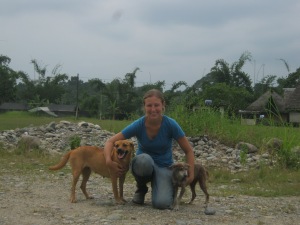
Rebecca Starkman
When I was studying abroad in Spain, two of my friends and I went to eat dinner one night and had quite the experience. We were looking over the menu and one of my friends settled on a lasagna dish. The menu was in Spanish though and he didn’t speak or read the language so he wasn’t sure what ingredients were in it. I read the menu and helped translate (so I thought). “Oh that says beef. Beef lasagna,” I told him. He took my word for it and placed his order. When our food came out, my other friend and I were actually wishing we would have ordered the lasagna. It looked and smelled great! But then he took a few bites and something seemed wrong. He looked at us and said, “Hey I don’t know if this is beef…something tastes different.” We each tried a piece and noticed that something definitely did taste different. So when the waiter came by we asked him what exactly was in the lasagna. We were horrified to find out it was made of buffalo intestines!!! I couldn’t believe I mixed up “cow” and “buffalo” in Spanish. To this day my translation mistake is one of our funniest memories and little lessons learned from the trip. I guess we could say we tried all Spain had to offer!
Sarah Anne Ward
I lived in Ghana during the summer of 2014 but my trip started off with a dramatic rough patch, followed by a fun pick-me-up. It was my first time flying alone, let alone being in Africa, so you could say I was a little on edge. At the Accra airport, we got off the plane and walked across the open runway towards the immigration line. They asked us to prepare our documents (passport and yellow fever card) while we were in line to speed up the process and with just my luck, my passport was nowhere to be found in my bright purple folder labeled “PASSPORT”. Naturally I had a small meltdown. My classmates and I began running up and down the immigration line trying to find my passport, which had fallen out of my folder. After an hour of searching, a man came up to me and said, “the girl in this picture looks like you,” holding up my passport. And I was delighted to see that he found it, however it required about 30 more minutes of identification confirmation before he was allowed to give it back to me. He found my passport on the floor of our plane from London when they were cleaning it for the next flight. We got back in line for immigration and pretended like the passport was never lost in the first place! Then, while we were waiting in line for our documents to be reviewed, a lady dressed in traditional Ghanaian clothing came up to our group and told one of the students that she liked her backpack and asked where she got it. The student said, “I bought it at TJ Maxx but it’s in a city in the US called Harrisonburg in Virginia.” The lady then said “I’m from Harrisonburg! I work at Festival Dining Hall at James Madison University!” We literally all started jumping up and down screaming because somehow the first person that we managed to meet in Ghana literally worked at our university. Everyone in the airport looked at us like we were crazy but it was such a great moment. She asked us if we knew Dr. O-A and we said, “Of course, he’s here with us!” So when we got outside we all met up and had a JMU reunion.
Russell Anderson
I’ve had a ton of amazing experiences throughout my life. I’m thankful for almost all of them. I’ll share one of my fondest memories.
For me, working for Greenpeace USA was a very rewarding experience. It was one of those catalyzing times in life where you begin to realize where you fit into the bigger picture. During my time, we were provided the opportunity to travel to the Netherlands to join Greenpeace International as the campaign launch team for “Green My Apple,” a campaign developed to encourage Apple to improve their recycling and post-consumer take back policies. The campaign was a success, but that is not what made the experience memorable.
After spending a week at Greenpeace International, “The Arctic Sunrise,” Greenpeace’s Arctic flag ship came to port after months at sea. We spent the next 6 hours feasting, partying, and getting to know all these amazing organizers and activists. We were in the company of giants (in their own right) from 30+ countries. The power of that kind of energy keeps me buzzing with gratitude even today.
MDP Faculty Interview: Laura Warner
Dr. Laura Warner, a faculty member in UF’s Department of Agricultural Education and Communication, joined the MDP program this semester as an affiliate faculty member. We posed a few questions to her regarding her interest in the MDP program and in the development field.
How did you hear about the MDP program, and what motivated you to become an affiliate faculty member to the program?
I learned about the MDP program though my colleagues and Agricultural Education and Communication (AEC) students who have taken MDP classes or pursued the certificate. My work is focused on encouraging sustainable practices and the MDP program aligns well with my areas of interest and the work we do in AEC.
What specific aspects of the international development field are you passionate about, and why?
I am passionate about developing the competencies among international development practitioners that help them to plan, implement, and evaluate programs that encourage positive changes in the communities where they work. One strategy I teach is social marketing, where commercial marketing principles are used to encourage behavior change. I also teach program evaluation and love to strategize with students and practitioners on ways to capture the impacts of the work they do.
What are some of the most meaningful initiatives that you have been connected with in the development field, and why were they meaningful to you?
Because I focus on increasing programming competencies among practitioners, I have the opportunity to be involved indirectly with many different projects, locally and globally. The most meaningful initiatives for me are those where the practitioner is more successful because of something they’ve learned from me, such as a new strategy to promote change in a community or a better way to understand the target audience.
Alumni Update: Leandra Merz
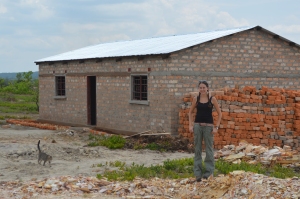
Leandra Merz graduated from the MDP program in 2014. She provided us with this update from Zambia, where she and her husband are co-directing an organization that provides educational access to orphans and other vulnerable children.
IIM International is dedicated to providing increased educational access to orphans and vulnerable children in rural Zambia. Leandra and Aaron Merz were inspired to start this NGO in 2012 in order to further assist the villages they served as Peace Corps Volunteers. The passion for helping these communities led Leandra back to the University of Florida for a Masters in Sustainable Development Practice. She was able to apply much of what she learned to improve the organization, but the most valuable information was related to fundraising and grant-writing. These invaluable skills have allowed IIM International to grow significantly in the past 2 years.
From 12 students in the first school year of 2013, IIM International now sponsors 21 high school students for the 2015 school year. Primary school is free in Zambia and many times uniforms are not even required so most children are able to attend grades 1-8. However, grades 9-12 are $200 a year for tuition alone. For a subsistence farmer (as most rural Zambians are) with an annual salary of $300-$400 a year, it is very difficult to send even one child to high school. We applaud the many families who sacrifice greatly in order to provide their children with an education. Sadly, this system leaves no hope for orphans or vulnerable children to attend high school. There are no government scholarships and very few private scholarships within the district. This is why IIM International has stepped in to offer sponsorships to academically qualified students with great financial need.
Evaluations of the first year of programs revealed that even with sponsorships many students struggle to perform well and to stay on track for graduation. IIM International realized that scholarships were only the beginning of what was needed to transform lives in this community. Poor boarding facilities and lack of support from caregivers were extremely detrimental to our first class of sponsor students. Through extensive fundraising efforts, we raised over $25,000 in order to build a student life center. This includes a male dormitory and a female dormitory with a capacity of 40 students, a kitchen, a house for a full-time caregiver, a borehole for clean water, and basic toilets. In January, the Student Life Center opened its doors to 18 students who now have a safe place to live, 3 nutritious meals a day, clean water, health care, and support from several staff members and volunteers.
We are pleased to report that two of our scholarship recipients, Mbachi and Elizabeth, graduated in December. Mbachi began working as a cook for us in order to save some money and she is now preparing for college. In April, she will begin a nursing program and continue pursuing her life-long dream of becoming a nurse. Mbachi represents the full mission of what IIM International is trying to accomplish in Zambia. Her mother passed away when she was a child and she has been living with her father who supports her and her siblings while working at the local health clinic. Our scholarship allowed her to stay in school and delay the typical process of starting a family and serving as a homemaker. Even if Mbachi chooses that role now, her extra years of education have made her more prepared to carry out that role in a more informed manner, take better care of her children, and properly manage a household budget. But our hopes are that she is able to realize her dream and continue on the path towards a profession in the medical field in order to better support her future family.
Future goals for IIM International include adding poultry, rabbit, and pig facilities as well as kitchen gardens. These livestock and agricultural projects would provide more affordable sources of food, some income generation and an opportunity for students to learn more advanced methods of farming. IIM International also hopes to begin offering vocational and life skills seminars to students and community members. We realize that many people are unable to attend school because of the pressure to generate income. Likewise, many young women who have qualified for secondary school have already found themselves pregnant and have no daycare options that would allow them to attend school full time. We hope that by offering programs designed to improve the quality of life, the business and family management skills of individuals, and instruction in a broad range of income generating activities we are able to impact a larger demographic of the community in which we work. To learn more about IIM International or to donate towards our mission please visit http://www.IIMinternational.com.
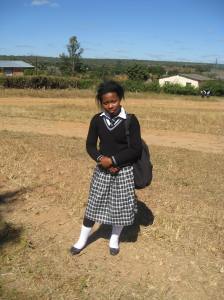

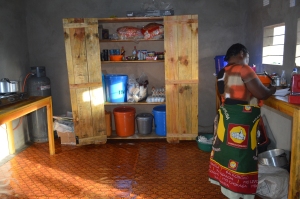
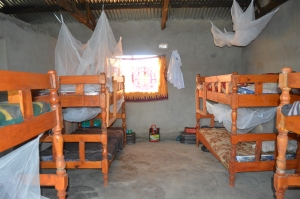
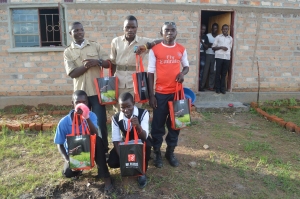
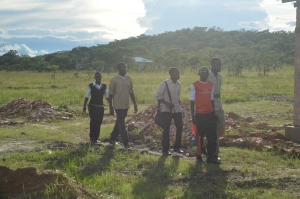
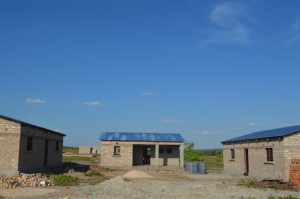
MDP Posters at LAS Field Research Clinic
On February 13, MDP students joined students from other disciplines in presenting posters at the 13th annual Latin American Studies Field research clinic. This was the first time that members of MDP Cohort 4 presented the results of their summer field practicums as a group.
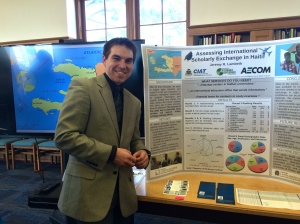 Poster accompanied by an interactive TV display
Poster accompanied by an interactive TV display
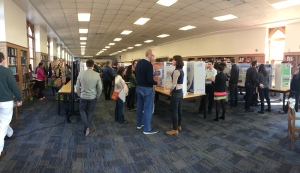
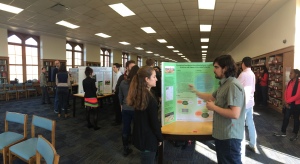
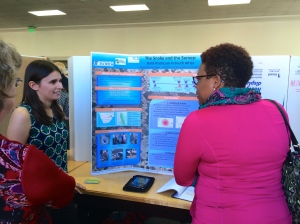
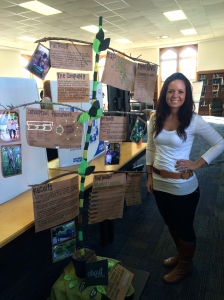 The grand prize winner–results of a sustainability initiative, displayed on re-used paper grocery bags
The grand prize winner–results of a sustainability initiative, displayed on re-used paper grocery bags
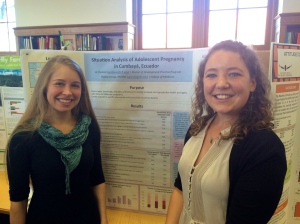 A collaborative project between an MDP student and a medical student
A collaborative project between an MDP student and a medical student
MDP Cohort 4
Interview with new MDP faculty member, Susan Paulson
 This semester, UF’s Center for Latin American Studies welcomed Dr. Susan Paulson as a core faculty member. Dr. Paulson previously taught at Miami University in Ohio and Lund University in Sweden, and has been involved in a number of international development initiatives, mostly in Latin America. Dr. Paulson is currently co-instructing the core MDP course “Sustainable Development Practice,” and in this role is aiding MDP students in their preparation for their field practicums. We posed a few questions to Dr. Paulson to learn more about her experiences working abroad, and her advice for future development practitioners.
This semester, UF’s Center for Latin American Studies welcomed Dr. Susan Paulson as a core faculty member. Dr. Paulson previously taught at Miami University in Ohio and Lund University in Sweden, and has been involved in a number of international development initiatives, mostly in Latin America. Dr. Paulson is currently co-instructing the core MDP course “Sustainable Development Practice,” and in this role is aiding MDP students in their preparation for their field practicums. We posed a few questions to Dr. Paulson to learn more about her experiences working abroad, and her advice for future development practitioners.
===============================================
What specific areas within the development field are you passionate about, and why?
I enjoy working with farming practices, agrobiodiversity management, agroforestry, especially when farmers invite me to learn by working alongside them.
What are some of the most meaningful initiatives that you have been involved in in other countries, and why were they meaningful to you?
An experience that was especially satisfying for me was participating in several stages of a Canadian project designed to support the academic success of Latin American students pursuing Masters degrees in Latin America-based programs in Environmental Studies and Sustainable Development. Colleagues and I devised this project with the goal of empowering local men and women to do research and lead development initiatives in their own territories. It is a sweet irony that ultimate success of ours and similar efforts would render obsolete our work as “international experts.”
How would you sum up your “international development” experiences?
I’ve received many unforeseen lessons in the course of my work supporting initiatives with FAO, UNIFEM, World Bank, Family Health International, USAID, CARITAS, Save the Children, and others. I now insist that “opportunity to learn” appear among the objectives of all development projects: it can be quite successfully fulfilled when no other objectives are met!
What drew you to become involved in academia and in the MDP program?
During fifteen years that I lived in South America, I was inspired and energized by involvement with graduate programs related to sustainable development practice. More recently, I had the pleasure of teaching some modules in an MDP sister program in Lund, Sweden. The opportunity to work with MDP students was one thing that motivated me to join the University of Florida in summer 2014.
What advice do you have for MDP students and graduates about working in the field of international development? Do you think there is anything that we need to be particularly aware of or cautious about?
My one advice is: think critically. Reflect critically on your own assumptions and roles in the process. Question the explicit and the underlying purposes of projects with which you are involved. Never stop asking: What is development? What do we want to conserve or sustain? In whose eyes? For whose lives?

